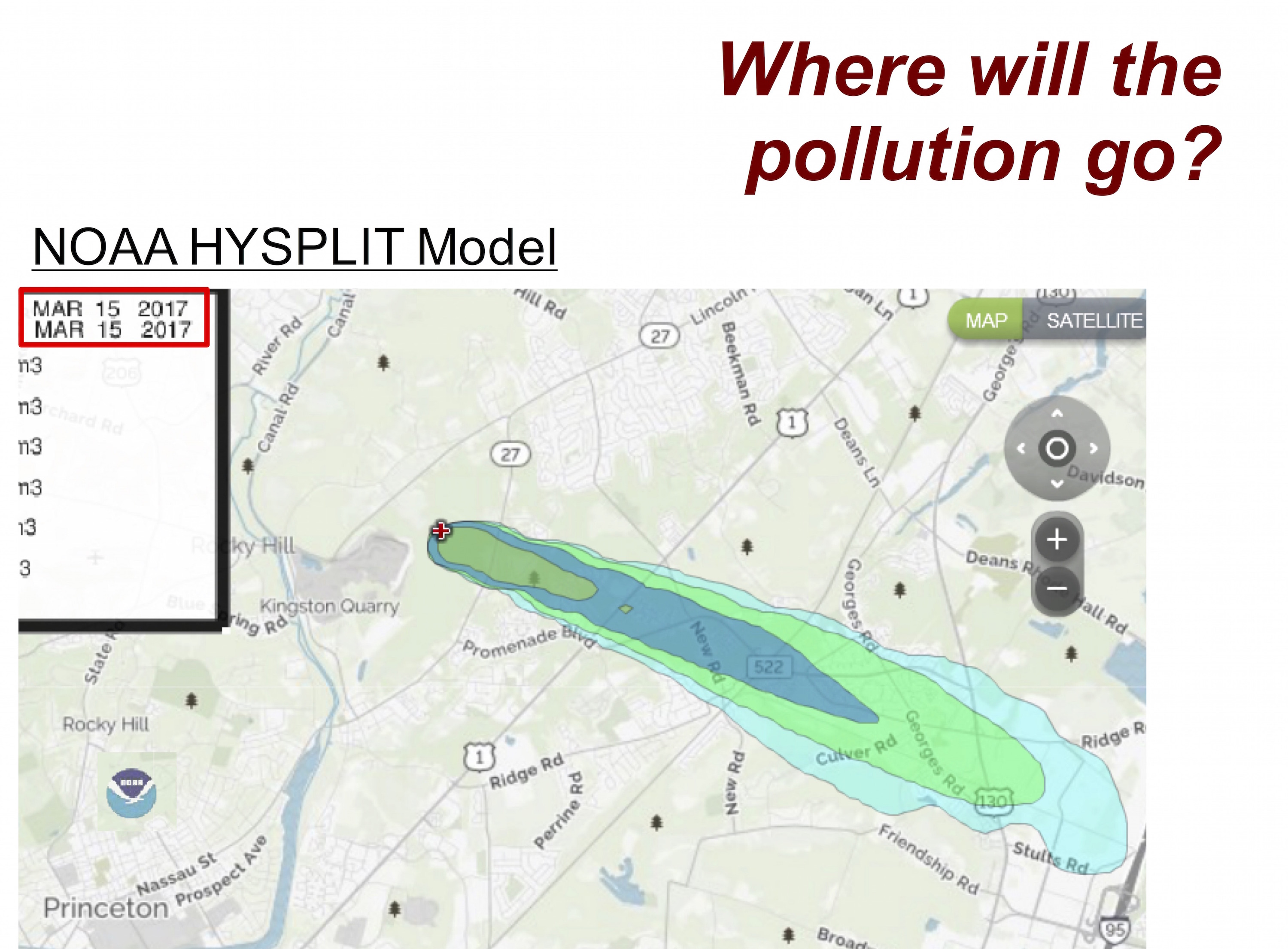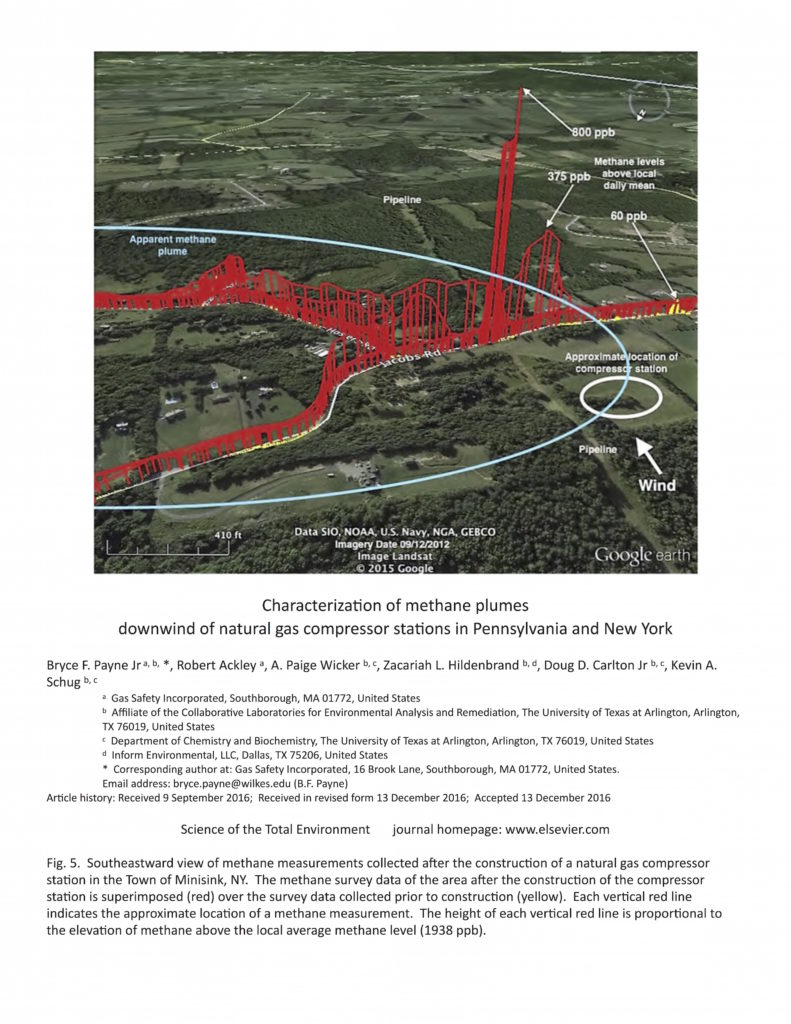What you don’t see CAN hurt you
- Compressor stations release dangerous chemicals during normal operations & millions of cubic feet of untreated natural gas during Blowdowns.
- Pipelines and compressor stations leak Methane.
- MORE ABOUT WHY A HEALTH IMPACT ASSESSMENT IS NEEDED (PDF)
Though FERC decided that they do not need to complete a Health Impact Assessment for the area around the proposed Compressor Station 206 in their DEIS, our research shows that the toxic emissions are a grave concern. See the attachment, review the studies and information through the links provided, and write comments about your concerns to FERC & NJDEP.
Read Clean Ocean Action’s Statement on Impact to Air Quality.
Read our latest report on Air and Health Impacts – July 2021 (PDF)
Read our full report on why a health impact assessment is necessary. (PDF)
Read and review studies and additional information
We don’t really know how much pollution will be emitted or released from the compressor station & pipelines since leaks and blowdown emissions are not predictable. Williams/Transco and the Environmental Protection Agency (EPA) don’t know this either. All known chemicals that are released from compressor stations do not need to be measured and reported according to regulations.
We do know that compressor stations emit cancer-causing chemicals into the air as part of normal operations, and these can travel as far as 5-miles away, depending on weather conditions.
- The drifts of emissions from compressor stations vary day-to-day and hour-to-hour.
- These are “invisible” unless seen with a thermal camera.
- Scientists Speak Out – Laumbach’s testimony to NJDEP
Laumbach, Robert, M.D., M.P.H., C.I.H. of Rutgers School of Public Health and the Environmental and Occupational Health Sciences Institute in Piscataway, NJ. (April 25, 2019). Medical Scientist Speak Out on Potential Health Hazards of Proposed Compressor. - Some of the chemicals known to be released by compressor stations and their health impacts
- Potential Health Impacts of Gas Infrastructure – Drs. Dyrszka & Moskowitz (7-8-14)
- Heath Risks of Gas Pipeline Infrastructure – MHCP 2016
- Studies of Health Hazards of Emissions from Natural Gas-Fired Compressor Stations Bowe, B., Xie, Y., Li, T., Yan, Y., Xian, H. & Al-Aly, Z. (2017, September 21). Particulate matter air pollution and the risk of incident CKD and progression to ESRD. Journal of American Society of Nephrology, 29: 218-230. Retrieved from http://jasn.asnjournals.org/content/29/1/218.full.pdf+html
- Compendium of scientific, medical, and media findings demonstrating risks and harms of fracking (unconventional gas and oil extraction) (5th ed.) (2018, March). Concerned Health Professionals of New York & Physicians for Social Responsibility. Retrieved from http://concernedhealthny.org/compendium/
- Kloczko, N. (2015, November). A brief review of compressor stations. Southwest Pennsylvania Environmental Health Project. Retrieved from http://www.environmentalhealthproject.org/files/A%20Brief%20Review%20of%20Compressor%20Stations%2011.2015.pdf
- NY Compressor Station Report. Retrieved from: http://www.environmentalhealthproject-ny.org/70 chemicals released from compressor stations are linked to 19 of 20 major categories of human disease.
- Russo, P.N. & Carpenter, D.O. (2017, October 12). Health effects associated with stack chemical emissions from NYS natural gas compressor stations: 2008-2014. Institute for Health and the Environment – A Pan American Health Organization / World Health Organization Collaborating Centre in Environmental Health, University at Albany. Retrieved from: https://www.albany.edu/about/assets/Complete_report.pdf
- Summary of Minisink Monitoring Results. Retrieved from: http://www.environmentalhealthproject.org/resources/10/click/5
- Summary on compressor stations and health impacts. (2015, February 24). Southwestern Environmental Health Project. Retrieved from http://www.environmentalhealthproject.org/files/Summary%20Compressor-station-emissions-and-health-impacts-02.24.2015.pdf
- The hazards of a compressor station: A town wakes up to the realities of corporate deception. (2015, November). Retrieved from: http://350ma-berkshires.org/the-hazards-of-a-compressor-station-a-town-wakes-up-to-the-realities-of-corporate-deception/Dr. Nordgaard’s [Boston pediatrician] “main point was that the EPA limits do not closely reflect actual human health risks. The closer you are to the compressor station, the worse the symptoms experienced. Both doctors [Dr. Nordgaard & Dr. Sheila Bushkin-Bedient, physician at Albany’s Institute for Environmental Health] agreed that many of these chemicals are known carcinogens and respiratory irritants, but that an even greater danger would come from their synergistic combinations, some of which have never before been tested on humans.”
“Average emissions” is what is required as measurement & reporting of certain chemicals, and this minimization of spikes in polluting allows for compressor stations to be considered “minor” pollutants under the Clean Air Act.
- This “averaging over a year and region” measure does not account for “peak” emissions or Blowdowns that can be especially problematic (spikes in emissions).
- People living near compressor stations report health issues that seem to be related to the emissions.
“The National Ambient Air Quality Standards (NAAQS) used as a benchmark for air quality were not created to assess the air quality and safety in a small geographic area with fluctuating emissions…NAAQS reflects what, over a region, over time, is deemed safe population-wide. This is very different than what is safe within for instance 1200 feet of [a] compressor station.” — SWPA-EHP Report (click to read full report)
The company cannot tell how many “blowdowns” will occur at the compressor station, but millions of cubic feet of untreated natural gas is released during blowdowns.
- To depressurize gas during scheduled maintenance, to respond to an emergency, or by accident, natural gas is vented to the air. A blowdown is the largest single emission from a compressor station. The blowdown releases a gas plume that extends 40-60 meters in the air. A blowdown can last up to three hours, with the first 30-60 minutes being the most intense.
- People living near compressor stations have reported incidents of odors and burning eyes, headaches and coughing, during blowdowns. [Source: SWPA-EHP Report]
Potential Fugitive Releases & Accidents at both Compressor Stations & Pipelines carry risks that are not considered by current regulations. Pipelines leak Methane, a significant contributor to ozone & smog. When natural gas escapes unburned, as it often does during production and distribution, its essential component, methane, is particularly pernicious — a greenhouse gas that is more than 80 times as potent as carbon dioxide over 20 years as it dissipates.






